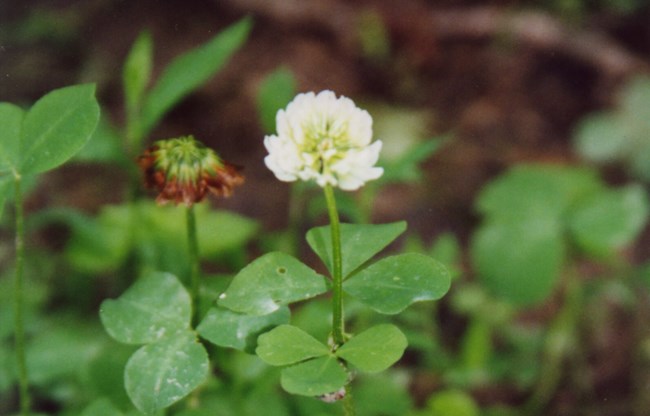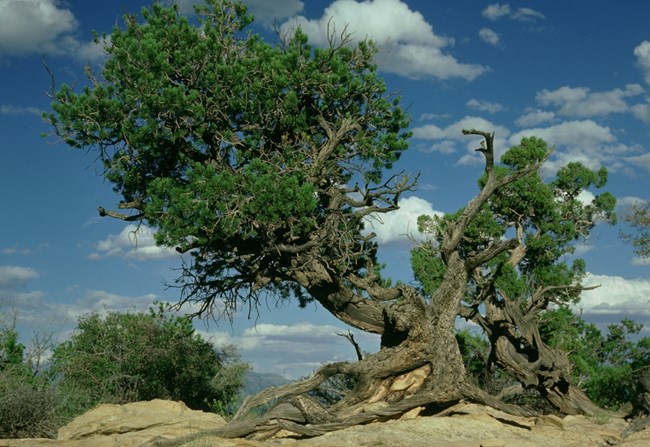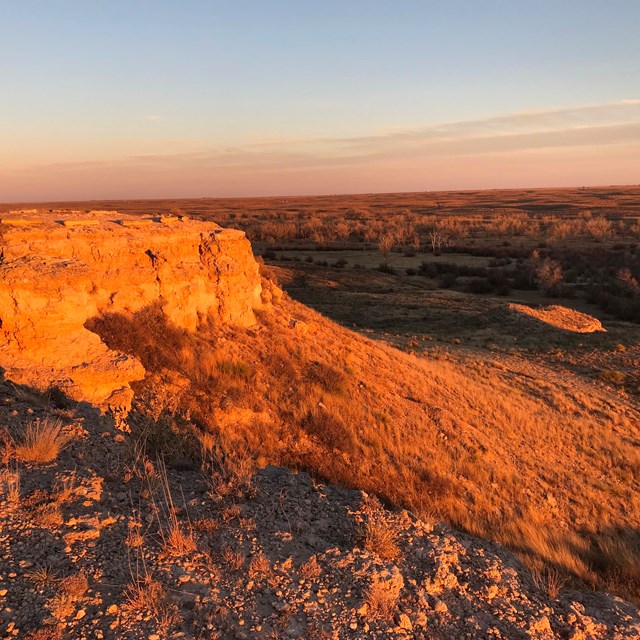Last updated: April 23, 2025
Article
Plants Along the Santa Fe Trail
Santa Fe Trail travelers often recounted their journeys through seemingly endless expanses of tall- and shortgrass prairie. “In spring, the vast plain heaves and rolls around like a green ocean,” wrote one early traveler. But, if you look closely, you will find an amazing diversity of plant species along the Santa Fe Trail, each with their own story. Some provided sustenance for those who lived upon and crossed the Great Plains. Some were once plentiful but have now all but disappeared. One even helped lost travelers find their way. Read on below to learn about the stories of a small selection of plants found along the Santa Fe Trail.

Photo/NPS
Breadroot Scurf-Pea
Psoralea esculenta
Commonly referred to as prairie turnip or timpsila, the breadroot scurf-pea was once a staple food of many Plains tribes, including the Cheyenne, Cree, Kaw, Lakota, and Osage. The tuberous root of the plant can be eaten raw, cooked, or dried. Common during the days of the Santa Fe Trail, the plant is much scarcer today due to the conversion of prairie to farmland.

Photo/NPS
Cane Cholla
Cylindropuntia imbricata
Santa Fe Trail travelers would have seen cane cholla, the most common species of cholla in New Mexico, on the western half of the Trail. The fruits, high in calcium, can be eaten raw, stewed, or dried and ground into flour. The plant’s woody skeleton can be used to make furniture and canes, and the thorns make excellent improvised sewing needles and fishhooks.

Photo/US Fish and Wildlife Service
Compass Plant
Silphium laciniatum
Found on the Santa Fe Trail, travelers lost on the Great Plains used the compass plant to navigate. A natural compass, the plant’s leaf edges align north to south. The Pawnee used the powdered root for tea, and some tribes used the sap as gum.

Photo/NPS
Prairie Cordgrass
Spartina pectinata
You can find wet and marshy prairies of prairie cordgrass along the Santa Fe Trail. Similar to the wetland wildlife that use the grass for shelter, both pioneers and Native Americans, particularly the nearby Ponca and Omaha, used prairie cordgrass for thatching lodges.

Photo/US Fish and Wildlife Service
Running Buffalo Clover
Trifolium stoloniferum
Once thought to be extinct, the running buffalo clover is one of the most endangered plants in North America. The plant has been found in Missouri and Kansas, but rapidly declined with pioneer settlement, likely due to the disappearance of bison. The plant is thought to have depended upon the woodland disturbances created by large animals, especially bison, for survival.

Photo/NPS
Two-Needle Piñon
Pinus edulis
Towards the end of their journey, westward Santa Fe Trail travelers would have come across these trees and their delectable nuts. Piñon nuts were once a staple of Southwestern Native American tribes, including Pueblo tribes and the Apache, and are still savored today.


